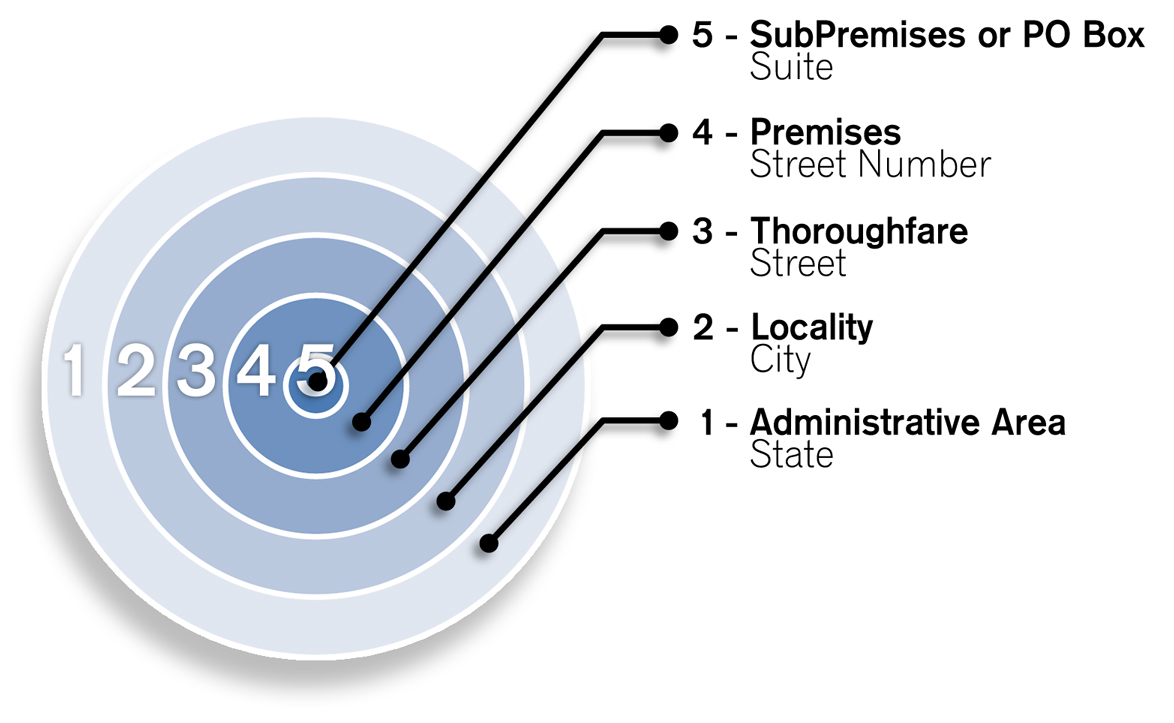Global Address Verification:Result Codes
| Global Address Navigation | |||||||
|---|---|---|---|---|---|---|---|
| |||||||
| |||||||
| |||||||
| |||||||
| Sample Code |
Result Code Use
Melissa Data's products use a result code system to indicate data quality; the status and any errors. These result codes are four-character codes (two letters followed by two numbers), delimited by commas. Result code definitions are shared among Melissa Data products.
Example
An example returned result code string:
AC01,AE10
Instead of looking at multiple properties and methods to determine status, you can look at the output of the results parameter.
From this output you can determine that the address is:
| Code | Short Description | Long Description |
|---|---|---|
| AC01 | Postal Code Change | The postal code was changed or added. |
| AE10 | Premise Number Invalid | The premise (house or building) number for the address is not valid. |
Be sure to reference Result Code Details for a list of Melissa Data's result codes.
Understanding the Code
To fully understand result codes, you need to know them. Knowing what codes are possible and what they indicate will be key in building an effective application. It is useful to know all the codes, but this does not necessarily mean you will use them all. Just because you have a toolbox, doesn't mean you will also try to use a screwdriver along with a hammer on a nail.
Address Verification (AV) Codes
- AV2X denotes an address that has been verified to the highest possible level with the reference data.
- AV1X denotes a partially verified address, but NOT to the highest level possible with the reference data.
- The second number indicates the level of verification. There are five levels:

- Administrative Area(level 1) verification is the most general verification area, with SubPremises(level 5) being the most specific area.
- Ideally, all addresses should be verified to Premises(level 4) or SubPremises(level 5.) However this is dependent on the quality of the address data and the countries’ reference data. Some countries lack enough data to be verified to the SubPremises. They may only have data to the Locality(level 2.) This is why it is possible to have an AV22 code. The address has been verified up to the Locality and the reference data only has verification up to that level.
Change Code System
The purpose of the change code system is to warn users of our service of significant and potentially impactful changes. For this purpose, we designed our system to return AC codes for significant changes. We do not count the following situation as a significant change:
- White spaces
- Leading 0’s in a postal code
- Diacritic equivalent (é vs e)
- Abbreviations
- Common variations
- Standardizations
Additionally, we will not always take the input area fields as the exact input field. The reason is that the slotting of dependent locality, locality, and administrative area are often non-standard and written in different locations. Our engine is designed to allow for mis-slotting and pull out the right pieces for matching. For our change codes, we will compare what we identify as a field vs the output. So, if we identify an input locality as part of the address lines or in dependent locality but the value is not changed, we will not trigger a change code.
We understand that this may not suit all of the users preferred change code usage. With global addressing, changes from the input and output are so common that we needed a way not to drown out the significant changes by having too many insignificant changes.
Another thing to keep in mind is that tracking and identifying 100% of changes is a difficult task. We strive to produce our changes codes with the best accuracy possible, but with the immense variation of address inputs possible, there will always be gaps and edge cases. We are continuing to make our change codes as accurate as possible.